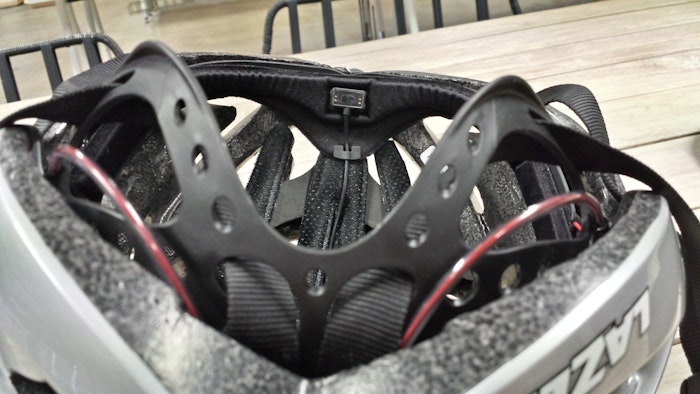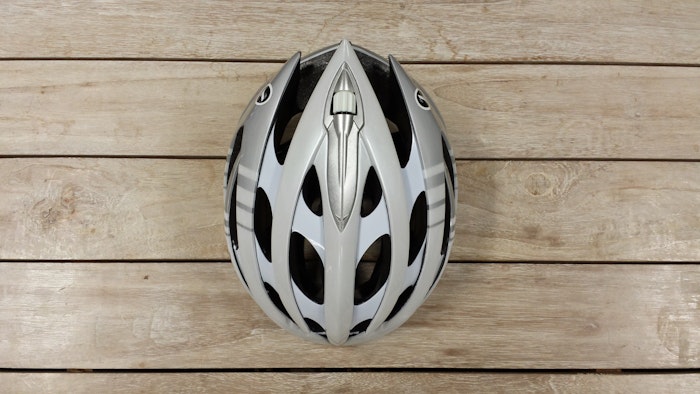There's no shortage of options these days when it comes to purchasing a helmet - and Lazer have recently introduced a new technology to make your decision even harder. My admittedly pessimistic first thought when I heard about the Lazer LifeBEAM reading your heartrate through your head, was that it would be nothing more than a gimmick... However having now used the product, my opinion is very different.
Now I don't usually track my heart rate during a commute to and from work; one reason being that I have a pretty good idea of where it's at - but the main reason? Heart rate straps. Clearly the Israeli Air Force weren't too fond of heart rate straps either, as this is where the LifeBEAM technology was born. Originally developed for Israeli fighter pilot helmets, the LifeBEAM quite simply measures your heart rate from your head. Lazer has now taken the opportunity to integrate this technology into their Genesis helmet range.
Buy the Lazer Genesis LifeBEAM here
How does it work? It's pretty simple. A small sensor sits neatly in the front of the helmet, in the pad which rests against your forehead. Some wires are then equally neatly fed through the helmet into the helmet's 'brain', which sits at the rear. The brain transmits to both ANT+ and Bluetooth devices, and has a battery life of approximately 15 hours. Setting it up with my Garmin computer was easy. Turn on the helmet, turn on the Garmin and five seconds later they were paired. I put the helmet on and about 15 seconds later it had picked up my heart rate. For those without an ANT+ device, readings can be displayed via Bluetooth on any number of devices.

The Fit
Being essentially a modified high-end road helmet, the LifeBEAM feels...Just like a high-end road helmet. The sensor is unnoticeable, and the helmet is about the same weight as its sensor-less counterpart. One slight difference to most helmets however is the reasonably thick pad, which sits on your forehead. While keeping the helmet really comfy, it makes things a bit warmer and could bother some users in hot conditions.

Performance
Developed for military use, the technology is designed to handle extreme conditions; such as pulling 10Gs in a fighter jet, or parachuting out of a cargo plane. Mountain biking was therefore no challenge for this technology. As you can see from the heart rate graph below - the readings were accurate at all times, and never spiked (aside from the low reading after stopping). Readings updated quickly and constantly on my Garmin, and they were definitely reflective of my perceived effort.

Those who use heart rate straps will know that if you don’t have the right amount of moisture present at the sensor-skin meeting point, readings can spike. Wind is also a problem for straps. Unless you're wearing superman-tight Lycra, flapping clothes will often cause outrageously incorrect readings. This can be pretty annoying for those who like to know their average heart rate throughout the entire ride. The Lazer LifeBEAM eliminates this issue completely, which is a huge positive for me.
Conclusions
After using this helmet - I'm all for this technology. It's reasonably priced as far as high-end road helmets are concerned, it works well and it eliminates many of the pitfalls of wearing a heart rate strap. As with most products, not everything is perfect. Having to remember to charge my helmet isn't ideal, but I think it's worth it for what it brings to the table.
Would I run out to purchase a helmet with this technology? No because I've got a perfectly fine helmet right now. But if I was in the market for a new helmet, I'd get one of these for sure.
Hear from Lazer's Head Helmeteer about the new LifeBEAM






